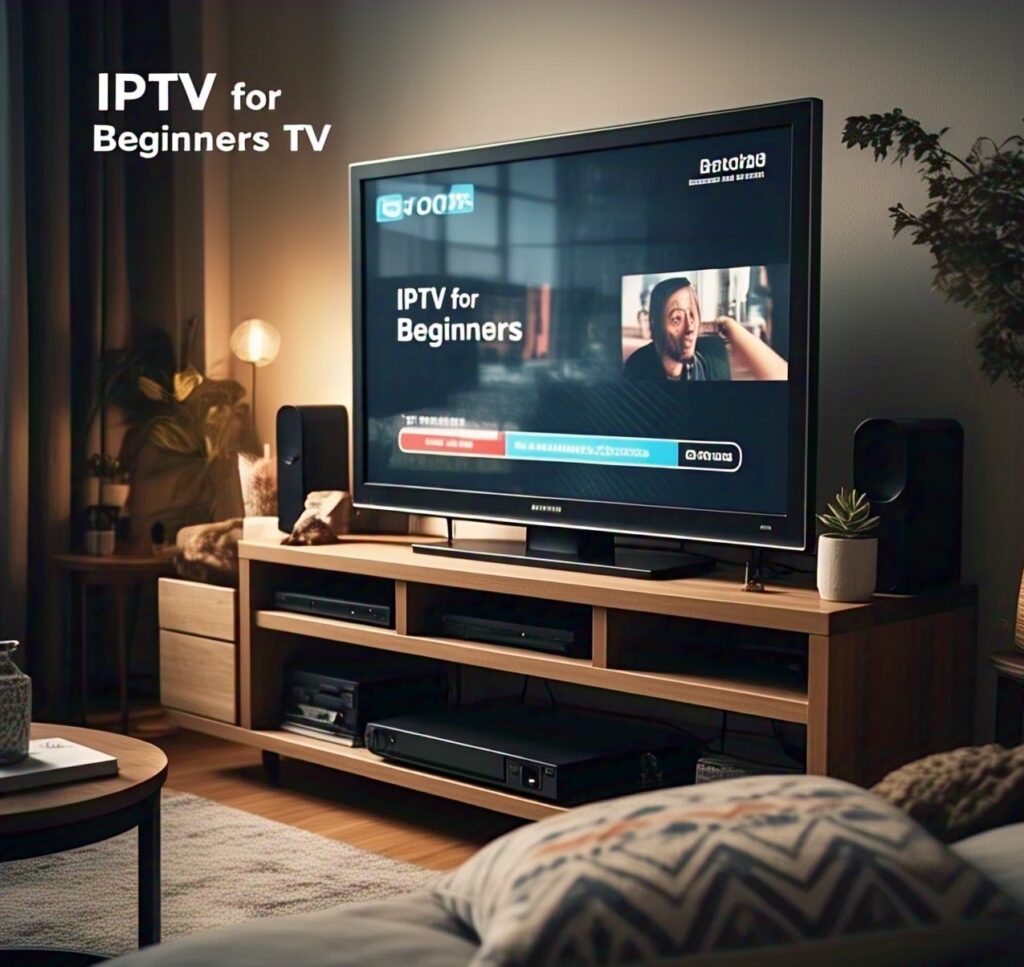If you’re completely new to streaming and want to understand IPTV for Beginners, this comprehensive 1,200-word guide will walk you through every step of the process. IPTV (Internet Protocol Television) is transforming home entertainment by delivering television content through your internet connection instead of traditional cable or satellite services.

What Exactly Is IPTV? A Beginner’s Explanation
For those just discovering IPTV for Beginners, let’s break down the fundamentals. IPTV stands for Internet Protocol Television, which means it transmits television programming using internet protocol (IP) networks. Unlike conventional cable TV that broadcasts through physical cables or satellite dishes, IPTV streams content directly through your internet connection.
Key Differences Between IPTV and Traditional TV
- Delivery Method: Uses internet instead of cables/satellites
- Content Flexibility: Offers live TV, on-demand, and catch-up viewing
- Device Compatibility: Works on smartphones, tablets, smart TVs, and streaming devices
- Cost Structure: Typically more affordable than cable packages
The Three Main Types of IPTV Services
- Live Television: Streams channels in real-time (news, sports, events)
- Video on Demand (VOD): Library of movies and TV shows available anytime
- Time-Shifted Media: Lets you watch programs that aired hours or days ago
Getting Started with IPTV: A Step-by-Step Guide IPTV for Beginners
Step 1: Choosing the Right IPTV Service Provider
When starting your journey with IPTV for Beginners, selecting a reliable provider is crucial. Here are the best options:
Legal Subscription Services:
- Sling TV: Affordable basic packages
- Hulu + Live TV: Includes Disney+ and ESPN+
- YouTube TV: Unlimited cloud DVR
- Philo: Budget-friendly entertainment focus
Important Considerations:
- Channel lineup (make sure it has your favorite networks)
- Simultaneous streams allowed
- Cloud DVR storage capacity
- Device compatibility
⚠️ Warning About Illegal Services: Many cheap IPTV services offer thousands of channels at suspiciously low prices. These often:
- Get shut down unexpectedly
- Provide poor quality streams
- May contain malware
- Could put you at legal risk
Step 2: Internet Connection Requirements
Since IPTV relies entirely on your internet connection, having sufficient bandwidth is essential. Here are the detailed requirements:
| Stream Quality | Minimum Speed | Recommended Speed |
|---|---|---|
| SD (480p) | 3-5 Mbps | 7 Mbps |
| HD (720p/1080p) | 10 Mbps | 15 Mbps |
| 4K Ultra HD | 25 Mbps | 35+ Mbps |
Pro Tips for Optimal Streaming:
- Use wired Ethernet connection when possible
- If using WiFi, position your router centrally
- Close bandwidth-heavy applications during streaming
- Consider upgrading your router if using multiple devices
Step 3: Essential Equipment for IPTV Beginners
You’ll need the following hardware to enjoy IPTV:
1. Streaming Devices (Ranked by Ease of Use):
- Amazon Fire TV Stick 4K: Best balance of price and performance
- Roku Streaming Stick+: Simple interface for beginners
- NVIDIA Shield TV: Best for advanced users and 4K
- Apple TV 4K: Ideal for Apple ecosystem users
2. Smart TVs:
Most modern smart TVs (2018 and newer) have built-in IPTV capabilities through apps. Popular brands include:
- Samsung (Tizen OS)
- LG (webOS)
- Sony (Android TV)
- Vizio (SmartCast)
3. Set-Top Boxes:
Dedicated IPTV boxes like:
- Formuler Z8 Pro
- MAG 322
- BuzzTV XRS4500
Step 4: Installing and Configuring IPTV Apps
IPTV for Beginners, these are the most user-friendly apps:
1. IPTV Smarters Pro
- Pros: Clean interface, easy setup
- Cons: Limited customization
- Best for: Absolute beginners
2. TiviMate
- Pros: Beautiful EPG, recording capability
- Cons: Premium features require payment
- Best for: Fire TV/Android users
3. XCIPTV
- Pros: Lightweight, simple
- Cons: Basic features
- Best for: Testing services
Setup Process:
- Download app from official store
- Enter provider credentials
- Import playlist (if required)
- Customize channel organization
Common Problems IPTV for Beginners (And How to Fix Them)
1. Buffering and Freezing Issues
Causes:
- Insufficient internet speed
- Network congestion
- Server-side problems
Solutions:
- Test your internet speed (speedtest.net)
- Reduce stream quality
- Use wired connection
- Restart router/modem
2. EPG (TV Guide) Not Working
Troubleshooting Steps:
- Check EPG source URL
- Refresh guide data
- Contact provider for updated EPG link
3. Channels Not Loading
Quick Fixes:
- Restart application
- Check service status with provider
- Verify login credentials
- Update app to latest version
Advanced Tips IPTV for Beginners Ready to Level Up
Once you’ve mastered the basics, consider these enhancements:
1. Use a VPN for:
- Privacy protection
- Accessing geo-restricted content
- Preventing ISP throttling
2. Create Favorite Channel Lists
Most apps let you organize channels for quicker access
3. Set Up Parental Controls
Block inappropriate content for children
4. Explore Catch-Up TV Features
Never miss your favorite shows again
Is IPTV Legal? What Beginners Must Know
The legality of IPTV depends entirely on the service provider:
Legal IPTV:
- Licensed content
- Pays broadcasters
- Examples: Sling, Hulu Live, YouTube TV
Gray Area IPTV:
- May use unauthorized streams
- Questionable legality
- Often extremely cheap
Illegal IPTV:
- Stolen content
- Frequently shut down
- Potential legal risks
Final Thoughts: Your IPTV for Beginners Journey
Starting with IPTV for Beginners might seem overwhelming at first, but by following this comprehensive guide, you’ll be streaming like a pro in no time. Remember these key takeaways:
- Choose a reputable, legal provider
- Ensure your internet meets speed requirements
- Select the right device for your needs
- Start with user-friendly apps
- Troubleshoot common issues methodically
The world of IPTV offers incredible flexibility and value compared to traditional TV. With this knowledge, you’re now equipped to cut the cord and enjoy television on your terms.
